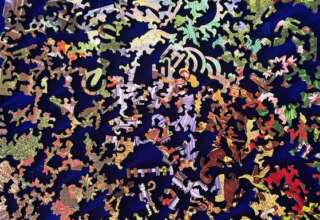
This essay concerns the personal dimension of life in a group or team—and particularly the interpersonal needs of those who participate in this group or team. The specific premise underlying the concepts presented in this essay is that a group is more likely to become a functioning, productive, collaborating team if the interpersonal needs of all members have been acknowledged and are being met. This specific description of interpersonal needs comes directly from the remarkable work done by Will Schutz (Schutz, 1966; Schutz, 1994).
I frame the exploration of interpersonal needs in a template of three predominate perspectives and practices that guide the way in which each of us engage our world—a template that I call the human spectrum and that is illustrated by the three primary colors: red, blue and yellow. I propose that there is a Ruby Red perspective and practice that is founded on the strong desire to take action and produce results. By contrast, an Azure Blue perspective and practice is founded on the strong desire to inspire and nurture. Golden Yellow, which is the third perspective and practice, is founded on the strong desire to be thoughtful and realistic.
The Three Domains of Life
From what do these three perspectives and practices arise? How is it that some people embrace Ruby Red, while others embrace Azure Blue, Golden Yellow or some blend of one or more of these three? The source of these three perspectives and practices are the three fundamental domains of life. The first domain is that of Information. We live in a world that requires us to be realistic (at least some of the time) and that requires us, in turn, to reach out for and interpret information about our world. A second domain stands at the opposite end of life. This is the domain of Intentions. Where do we want to be traveling in our life? What is our purpose and the purpose of the groups and organizations which we have joined? We are likely to wander aimlessly in our world without some sense of desired outcome(s). The third domain is one of Ideas. We must continuously engage in problem-solving and decision-making regarding how we get from where we are at the present time (the domain of information) to where we want to be in the near (or distant) future (the domain of intentions). The gap between our current state (as informed by information) and our desired state (as identified by intentions) is reduced (or eliminated) through the production of ideas and the movement to action based on the review of these ideas.






